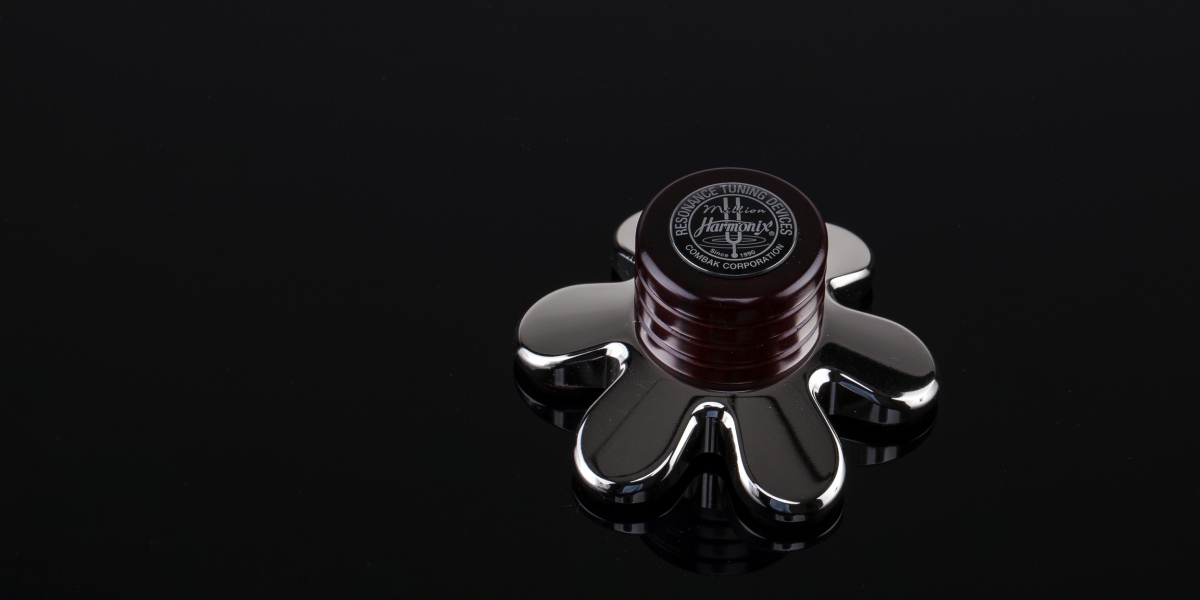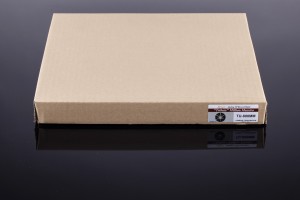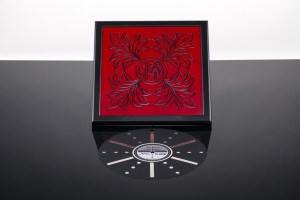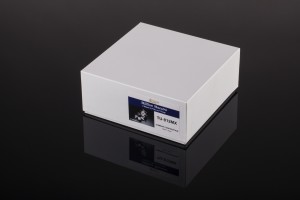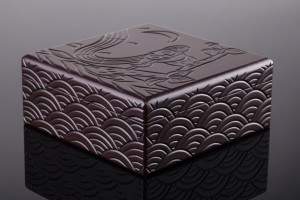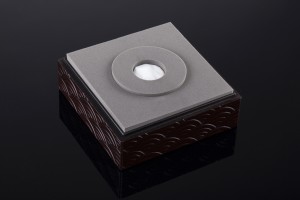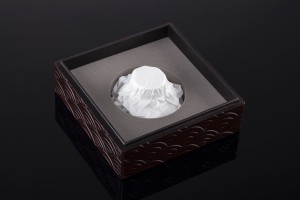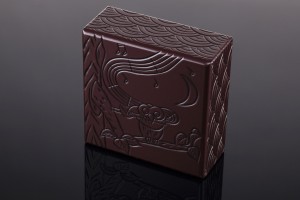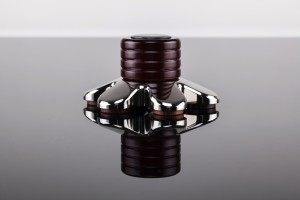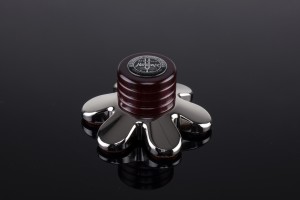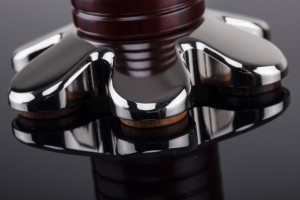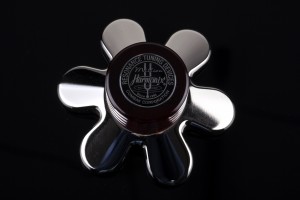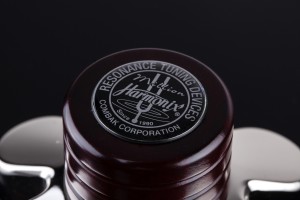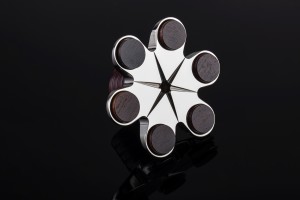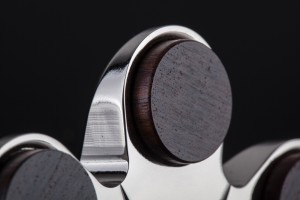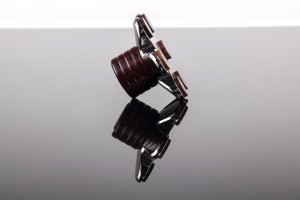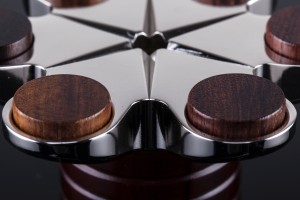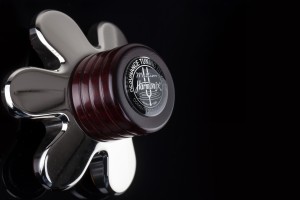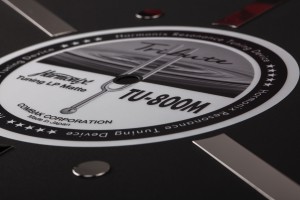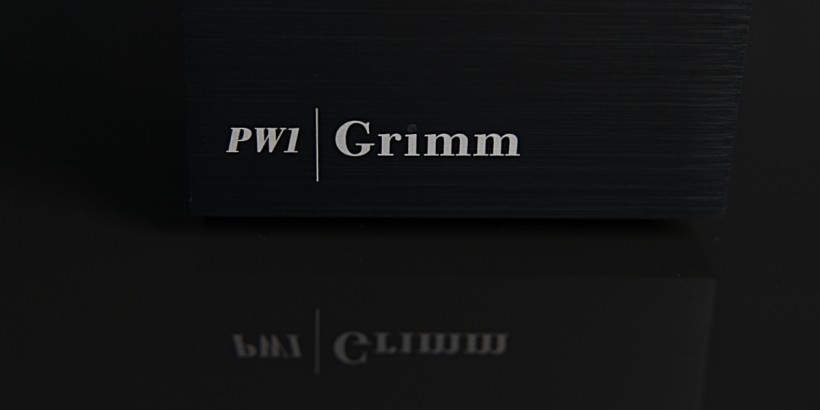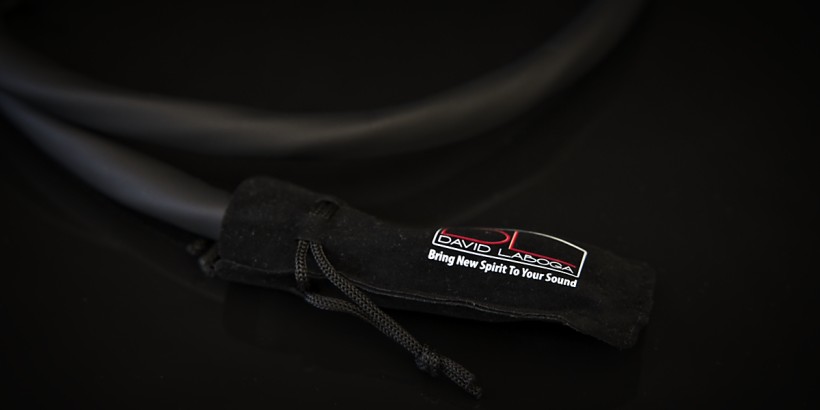Mr. Kiuchi, the Head of Combak Corporation, owner of Reimyo, Harmonix, Enacom and Encore brands is one of the true Japanese masters, artisans of the audio industry. He creates his products meticulously in order to offer his customers, music lovers, first of all a natural and true sound. Let me introduce his latest proposals for vinyl records enthusiasts, the Harmonix TU-800M Tribute matte and the TU-812MX record clamp.
Introduction
The wide range of products created by Mr. Kiuchi and his engineers includes both electronic components, cables, loudspeakers and a whole lot of so-called accessories, including racks, speaker stands, anti-vibration platforms and feet, and also tuning elements used for cables, components, speakers and even for walls of a listening room. I have had many occasions during different presentations to witness how much these elements can do for system’s performance. Many people presume, that accessories have only minimal, if any, influence on the sound. It might be true in some cases, but Harmonix products can do a lot of good if properly used. Mr Kiuchi likes to prepare presentations of his systems himself – he simply knows how to make them sing, so every time he is in Munich or in Warsaw (and surely on other shows too) it is him who sets up the system or at least gives them the final touch. Once, I had a chance to listen to Reimyo/Encore/Harmonix system set up before the Show and it sounded really good. And then Mr Kiuchi showed up and did some of his magic. The changes he introduced seemed insignificant – he just “fine-tuned” the setup and yet, when the music started to play again… well, long story short, everybody in the room was impressed as hell with how much could have been improved with so little changes. As many of you surely know, Mr. Kazuo utilizes his immense knowledge and experience not only when designing his products, but he also shares it with JVC Victor, the label famous, among other things, for its XRCD releases. Not only he and two other colleagues are responsible for the final sound of many of these albums but also, as far as I know, the JVC Victor studio uses some of Mr Kiuchi’s products, such as Harmonix cables from Million Series, so his contribution to the sound many of us know and love is quite significant.
Let’s get back to audio accessories. On one hand, all these elements are supposed to just help user “dot some i’s and cross some t’s”, meaning add the final touch to already high quality sound. On the other hand, in real life, the difference they are able to make often proves to be quite significant, some would say even irreplaceable. Setting up own systems for different shows is one thing, but I know that Mr. Kiuchi also advises many music fans helping them to utilize maximum potential of their setups using Harmonix accessories. These products, although they are “only” accessories, are developed in the same meticulous manner as Reimyo electronic components or Encore loudspeakers, and that takes a lot of time. Investing so much time preparing such products, trying numerous materials, performing listening test for hundreds, maybe even thousands of hours and fine-tuning the ultimate performance translates into remarkable but expensive products. It is important for potential buyers though, to understand that the role of Harmonix accessories is not to magically transform some poor sounding system into an astonishing one, but rather to extract the full potential of a high quality system, allowing it to deliver a wonderfully natural, musically involving performance, better than ever before.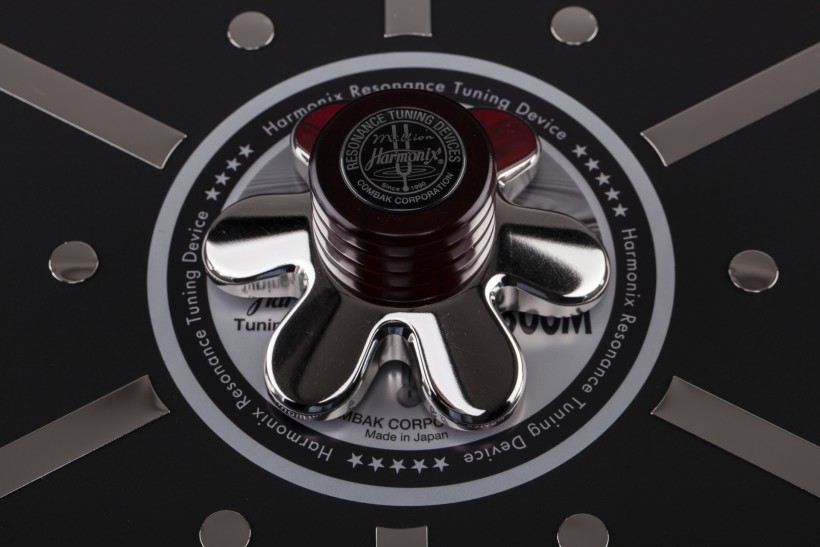
Let’s finally delve into the items under review – the turntable matte and record clamp, both developed by Mr. Kiuchi and his team. These items come from the Harmonix Million Maestro series, which includes among other products also the remarkable Hijiri interconnect that I’ve been using in my system for quite some time now. Let’s start with the matte called the TU-800M Tribute, which the manufacturer refers to as the “Tunning Record Matte”, or “Resonance Tunning Device”. As I’ve mentioned earlier, Mr. Kiuchi’s accessories are tools that allow user to “tune” his system in order to achieve the most natural, purest sound possible. As it reads on manufacturer’s website: “It is the world only Tuning Matte removing the distortion caused by turntable mechanism and by cartridge during tracking over record grove”. The TU-812MX record clamp is another element to perform a similar function. As the manufacturer emphasizes, the best sonic results can be achieved when using both these elements together and so I did during this test.
Design
It is fairly obvious from the moment one opens the outer carton box that this matte must have been designed and made in Japan. Inside one finds another, wooden, beautifully crafted box, as unique as the matte itself. Although it is not stated anywhere (at least I haven’t found any information about it), I bet that the box is a work of some traditional Japanese artisan. I am calling this item a box since the TU-800M Tribute comes packed in it, but the matte is very thin hence the box is very shallow or flat if you will, hence it’s more of a beautiful red frame than a box really. Many will treat it, and rightly so, as a piece of art and display it in some prominent space in their room. It is truly worth it! This is a wonderful bonus, referring to the Japanese culture, that each TU-800M Tribute owner (and most likely their families too) will appreciate.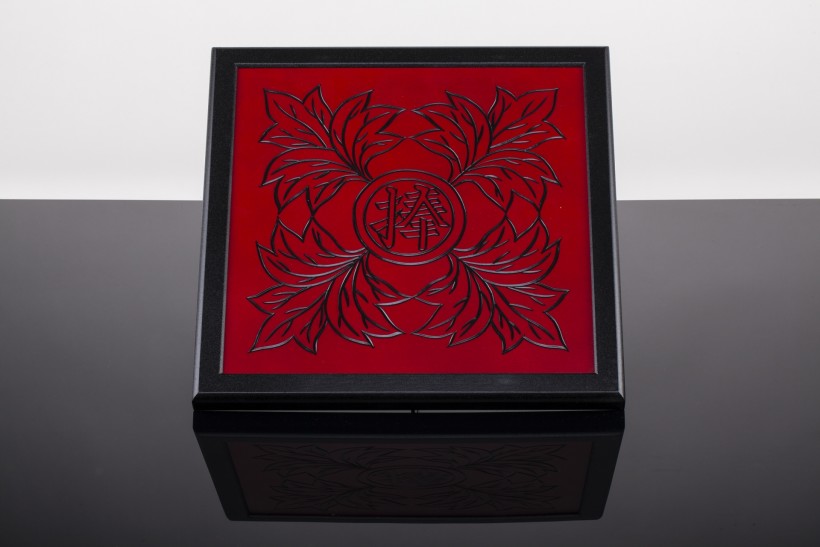
As usual with Mr. Kiuchi’s products, we are not offered much information about the materials they are made of. This Japanese maestro always insists that the potential owner of his products should be convinced to buy them by their performance and not parameters, specifications, materials they are made of, and so on. Great specs won’t help if one doesn’t like the sound – that’s a simple, yet convincing approach that is hard to argue with. After all, sonic performance should always be the key factor when choosing an audio product. As Mr Kazuo explained, preparing this new matte took 4 years. During this time, the best materials and their configuration were selected in course of tedious listening sessions. The final product is rather quite original, if somewhat inconspicuous. Inconspicuous, because this is a very thin (just 0.5 mm) matte, which considering the diameter of 298 mm translates into a mass of barely 47 g. The matte is black and it’s really hard to figure out what is it made of. I found somewhere a reference to a “hi-tec film” so we have to assume it’s not a paper, even if it looks a bit like it but rather some advanced material. It is worth noting that first of all it is quite easy to bend, which could potentially damage it, so one must avoid it (!). Secondly, it easily sticks with the record so one should be careful flipping vinyl record to the other side or removing it from the platter not to drop the TU-800M Tribute, which again, could damage it.
A number of metal elements are fixed to the upper surface of the matte. Again – no idea what kind of metal that is. There are six not very wide (about 1 cm) stripes running from the edge of the matte to its center (i.e. to the label), and between them there are six rows of metal dots, three in each. Their thickness is also very small, but still it is these metal elements that create an “interface” between the record and the matte. That means that the contact area between vinyl and TU-800M Tribute is limited to these metal elements.
As I mentioned before, the manufacturer suggests that the best effects are achieved when using the TU-800M Tribute matte together with Harmonix record clamp, the TU-812MX, which we also received for the test. Once one unpacks the clamp from the outer carton, it becomes immediately clear that this is another small piece of art. The Harmonix clamp, same as the matte, comes in a beautifully crafted wooden box, padded with a foam inside to protect it from damage during transportation. The TU-812MX is a clamp placed on the spindle of the turntable (as opposed to threaded ones that you screw on the spindle). It weighs 360g, which in comparison with, e.g. the massive Mr. Janusz Sikora’s clamp I use, makes it relatively light.
The Harmonix TU-812 MX is made of two materials – metal and wood. The upper part, the one used to handle it, is made of wood. The lower part, the main body, is made mostly of some metal. It features six metal “feet” that rest on the record, but all of them are finished with thin wooden discs. So this time wood is used as interface between clamp and record, while metal serves the same purpose between matte and the record. Mr. Kiuchi recommends not to use this clamp with mattes made from vibration absorbent materials such as rubber, leather, or vinyl offered by other manufacturers. In his opinion, they deprive the music of many small details, nuances which are the key to the true natural sound of music that once lost can not be in any way retrieved.
Sound
Discussions about the advantages of light clamps over the heavy ones and vice versa take place in the world of vinyl enthusiasts almost as often as between fans of light, soft-suspended decks, and rigid mass-loaders. Both have their advantages and disadvantages. Proponents of light clamps argue that the heavy ones eliminate only a fraction of the resonances, so they do not perform their job to the full extent. The fans of the latter ones point to the fact that they flatten records more efficiently thus creating better working conditions for the stylus. Mr. Kiuchi is convinced that lighter clamps ultimately do a better job, so the TU-812MX has a relatively small mass and the matte is very thin and ultra-light. His approach focuses on the elimination of harmful vibrations that prohibit the stylus from reading all the information recorded in the groove with utmost precision. To achieve that, he used proper materials carefully selected during countless listening tests. The fact that the work lasted four years proves that it was only when Kiuchi-san achieved a fully satisfactory effect, that both products were released to the market.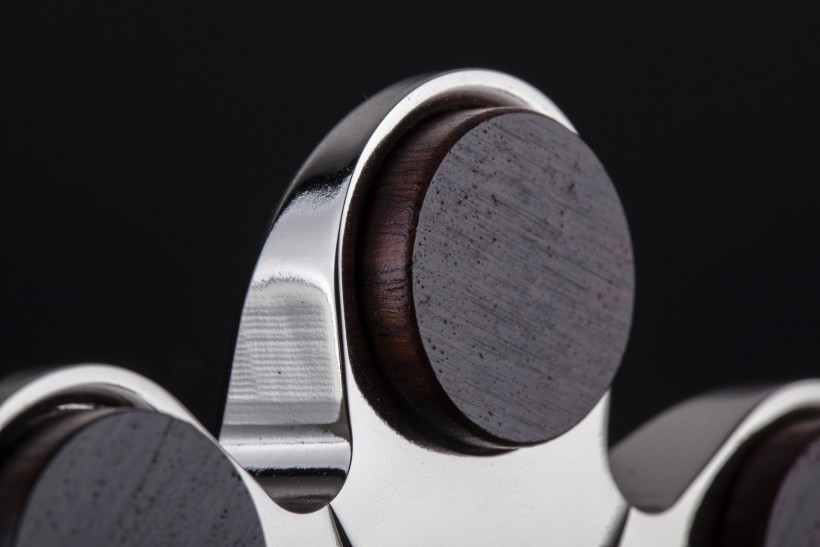
The test was performed using my J.Sikora Standard MAX turntable (featuring top power supply, reference platter, glass matte and clamp) with two tonearms. I focused on the one I knew best, my Schroeder CB with the Air Tight PC3 cartridge but I also used the even better performer, Acoustical Systems Aquilar with Archon cartridge. I also used two excellent phonostages – my Grandinote Celio mk IV and one of the best ones on the market today, the Ypsilon VPS-100 with matching step up. Among the amplifiers used during this extensive test, apart from my Modwright rig, I used Kondo Overture PM2, MBL 51 and Phasemation MA-1000. Mr. Sikora’s turntable is equipped with a 10mm thick glass matte and a very heavy metal clamp (actually made of a few different metals with different properties). These products are also a result of many experiments Mr Sikora performed and he, of course, chose those, that offered the best sonic results on his decks. I recently reviewed a high-quality set from Oyaide, with MJ-12 matte and STB HWX clamp (see HERE) and on my deck I found that both elements delivered great performance and I am sure they will do a fantastic job on many other decks, but when used on Mr. Janusz’s turntable they were not quite a match for his own products. They came close but still Mr. Janusz proprietary solutions did a slightly better job. Yet, knowing Mr. Kiuchi, many of his products and his strive for perfection, I was sure, that I had a very interesting test/comparison awaiting me. I was also sure that the outcome was not at all predetermined. Based on manufacturer’s recommendation, I tested the matte and the clamp primarily as a set, using them interchangeably with the J.Sikora’s elements. Comparisons were not that easy due to the large difference in mattes thicknesses that required changing VTA each time I replaced one matte with the other. What changes did the Japanese products introduce? Please read on.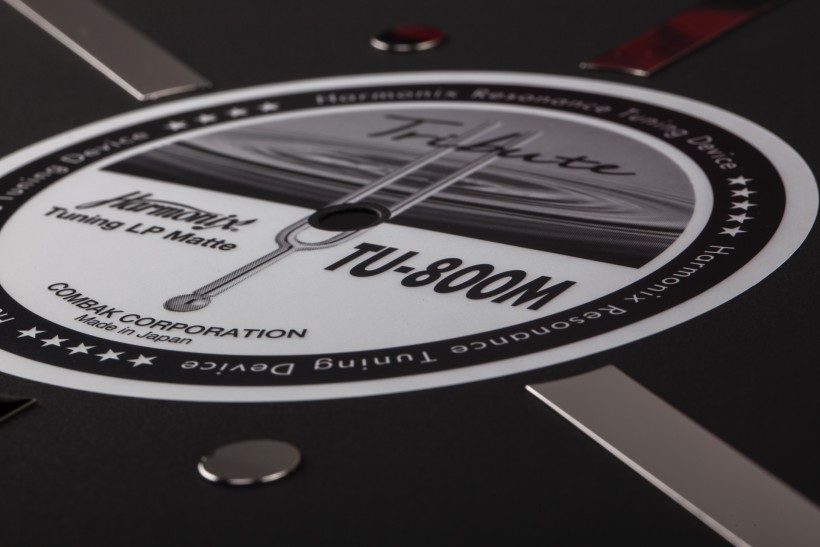
I started with the recently released first Harmonix Master Sound Series vinyl. Mr. Kiuchi, best known for his audio products, but also a co-creator of the success of the XRCDs (in all variations), has finally decided to prepare some vinyl releases as well. When I first heard about it I was sure that he wouldn’t disappoint fans and prepare very special albums in terms of both, musical value and sound/release quality. This particular title was originally released by the legendary, unfortunately non-existing anymore, record label from Japan called Three Blind Mice. The album features Duke Jordan’s Trio playing “So nice Duke”. From the very first moment, my system supported by the remarkable Ypsilon phono and the reviewed Harmonix products re-created this incredible atmosphere/ambiance of a small club, filled with a particularly enthusiastic audience that was caught so well in this recording. The album was recorded dozens of years ago and a tape-noise is clearly audible when you play it. So some may argue that it is not technically perfectly (not that I agree) recording, but musically I guess everybody would admit that it is excellent, and the atmosphere of the concert was graciously underlined by the Harmonix matte and clamp. This tape-noise, quite clearly shown with the Mr Sikora’s matte and the clamp (but not to a degree that would distract attention from the music itself), with TU-800M Tribute and TU-812MX while still audible, became more one of many elements of this recording, just as natural as the sound of the instruments, or the reactions of the audience, than anything that could disturb or annoy listener. I could effortlessly focus on what really mattered in this recording – wonderfully performed music clearly enjoyed not just by me but also by musicians and (the rest of the) audience.
The way this album was presented gave me clearly two options. For most of the time I just felt like closing my eyes and going into this engaging, yet relaxing journey, with musicians performing perhaps 3-4 meters from me, into the land of beautiful, colorful and natural sounds. But since this presentation was also so resolving with good separation, layering and soundstaging it allowed me a more selective approach too, while tracking individual musicians performing at their best. The thing is, that on this recording you can clearly hear the unique chemistry between the musicians, with Harmonix matte and clamp it became obvious how much they enjoyed playing with each other on the stage and how much fun they had while doing that. On top of that, these were three fantastic musicians so a chance to focus on individual performances offered by TU-800M Tribute and TU-812MX was highly appreciated too. The presentation with my matte and clamp set was a bit more precise, in terms of stronger contours, a bit better separation that resulted in instruments that functioned somewhat more as separate entities. The tested Japanese accessories directed my attention rather to the performance as a whole. It was still possible to follow a selected musician because the resolution and separation of this presentation was excellent, but its character encouraged following the “big picture” rather than individual performances. This first approach to presentation (with Sikora’s accessories) I would describe as more “audiophile”, while the other (with Harmonix) was more natural, closer to what one can hear during live concerts. During such shows one sometimes focuses on solos, but most of the time one perceives music as a whole without studying its individual elements. That’s how I perceived the presentation of my system when using Harmonix matte and clamp.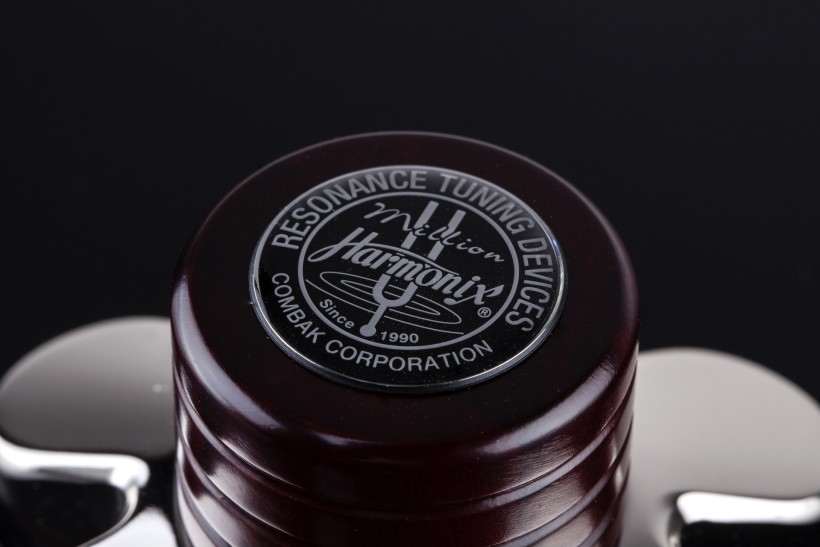
A session with Patricia Barber’s “Verse” album, released by MoFi on double 45 r.p.m. vinyl was very interesting too. It was difficult for me to make a quick comparison of both mattes and clamps, especially since I had to correct the VTA each time when replacing one set wit the other (with Schroeder it can’t be done “on the fly”). So I listened to one side using Harmonix components and then to the next one using Sikora’s, and in between there were some breaks because I had to raise or lower the tonearm. What differences did I observe? The voice of the vocalist was fuller, richer, more organic and more believable with the reviewed set. Same with, for example, a guitar that sounded clearer, maybe due to even more black background. Numerous small percussion instruments used on this album with the Harmonix sounded more delicate, while with Sikora’s their sound was more distinct, more powerful. The difference came from a slight shift of accents – the tested set presented the decay phase with utmost care while my own offered a very fast, immediate attack (when sticks hit instruments). In both cases the sound was fantastically open and vibrant but still, they delivered two slightly different versions of this performance.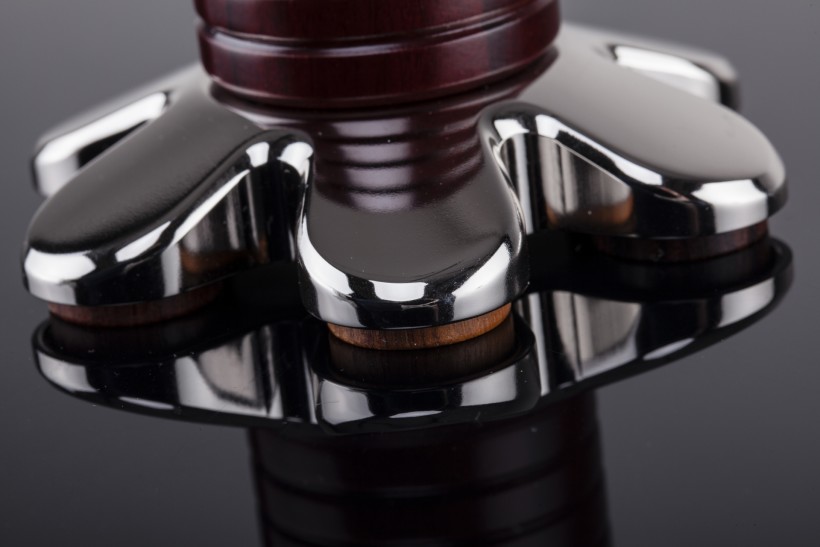
Another difference I observed considered soundstage. With the Japanese components it seemed maybe not really bigger (even though it was my first impression) but rather filled with more air, hence instruments seemed to have more room to breathe. Also, details of the events happening in the back of the stage seemed to be presented more clearly and the micro-dynamics improved too. The decay phase of instruments’ sound was better developed, longer and the room’s acoustics was more present in the presentation. All these tiny elements directly translated into a more realistic performance that made it even easier to immerse myself in the musical spectacle beautifully rendered in front of me. This was primarily the case for acoustic recordings, but as further listening confirmed, Harmonix products improved some aspects of the sound also for rock music.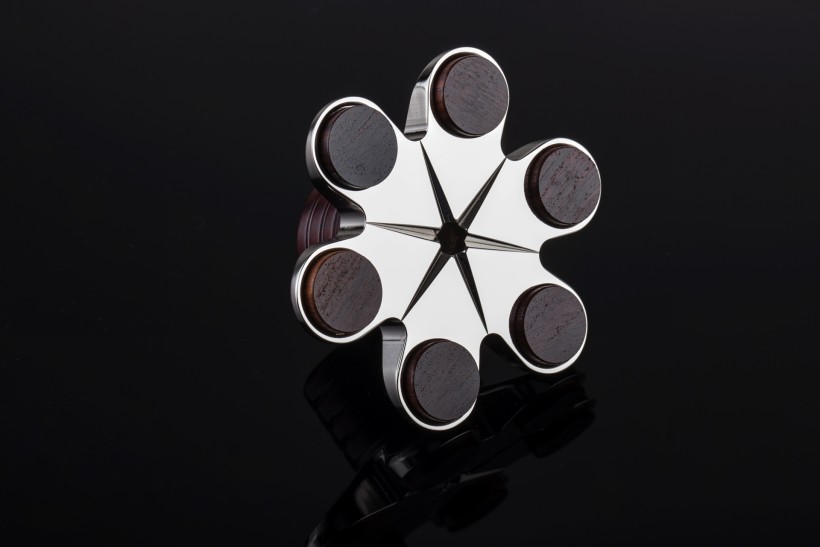
Bass extension, on the other hand, seemed slightly better with Mr Janusz accessories. It was deeper, had more authority, with a better marked, more immediate attack phase. With the Japanese matte and clamp bass was also deep and had a nice “kick” but it was presented in a bit softer, not that fast way. The double bass or piano with Harmonix sounded even more natural, but an electric bass guitar or Patricia Barber’s Hammonds were more convincing with Sikora’s accessories. Since both sets had their advantages, so finally I decided for an experiment trying to combine both of them. I placed the Japanese matte on top of the Polish one and combined them with the TU-812MX clamp to play several records. For many of them this turned out to be the best solution resulting in the fullest, best differentiated, incredibly resolving, lively, clean, and saturated sound. Naturalness of primarily (though not only) vocals was now absolutely astonishing. Acoustic instruments sounded rich, colorful and simply true, while electric and electronic ones delighted me with how fast and powerful they sounded. The longer I listened to this setup, the more I was convinced that if I were to use Harmonix TU-800M Tribute Matte and TU-812MX clamp I would combine them (on J.Sikora deck) with Mr Sikora’s matte as that delivered the best and most all-round sonic performance.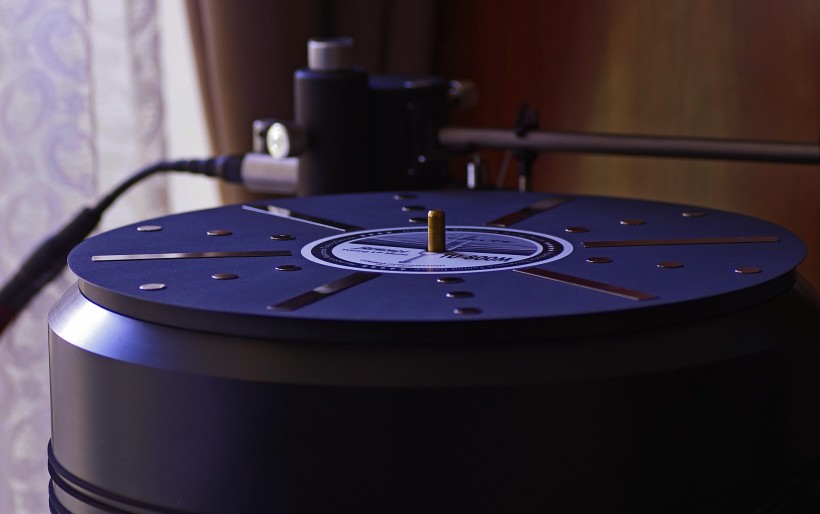
I performed a similar experiment using several more records with symphonic and rock music. Sikora’s matte offered an incredible stability and focus to the sound, to which the Harmonix elements added wonderful refinement, even better resolution and this elusive element that made instruments (even the electric ones) and vocals sound so unbelievably natural. The Polish matte gave scale and momentum to the presentation and the Japanese accessories offered astonishing insight into the deepest layers of music and emotions hidden there. The former took care of purity and transparency of the performance, the latter added richness to the sound to a degree that no other matte or clamp I knew had ever provided before. Harmonix set made even the lesser quality recordings of AC/DC and Metallica sound more “friendly”, focusing my attention on great pace&rhythm and the incredible energy of this music rather than some brightness and harshness of the sound.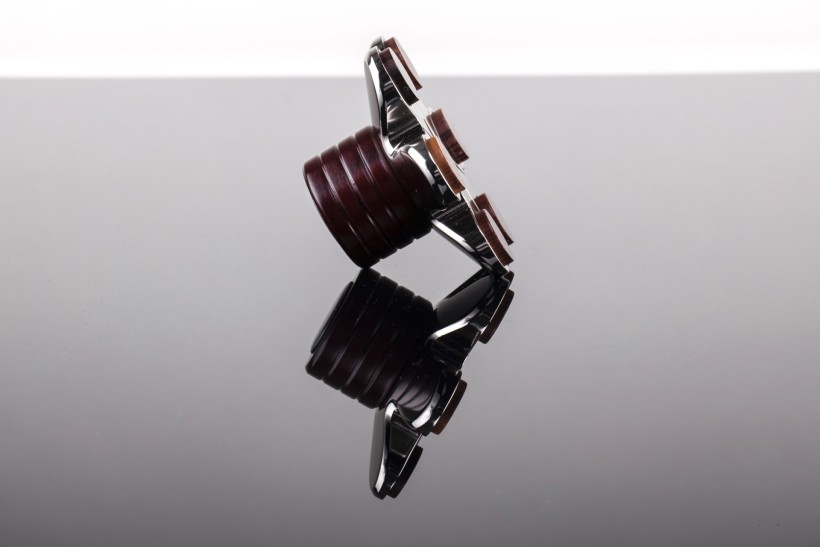
Summary
So, is it a perfect matte + clamp set? As we all know, there are no perfect audio products, although some come closer to that than others. In some particular cases I preferred the set prepared by Mr Sikora – usually with slightly warped records (slightly! I don’t have any heavily warped ones). The very heavy Polish clamp apparently was able to flatten such discs more efficiently, which translated into a better, more accurate sound. In most cases though, Kiuchi-san’s products offered a small but desirable advantage, making the performance closer to my preferred type – live one, that I know so well from concerts. One can say that Mr Kazuo’s works are closer to the elusive perfection, especially if one’s looking for “the maximum music in music”. It’s a bit like with the image/movie resolution – HD was once the best possible quality one could get and it looked so much better than anything in lower resolution. Today HD (or FHD) is still great but … the 4K format is even better, because the image is more colorful, cleaner, more accurate, more natural, more realistic, one can see more and easily get caught in the action.
A similar effect, but with respect to the sound, one can achieve using Harmonix TU-800M Tribute Matte and TU-812MX clamp. Well, maybe the scale of the improvement will not be that big. It will not change the sonic character of your system, and the well-known records won’t sound very different. The changes will be small, maybe even subtle, but I dare you after a few days of using these two products to go back to listening without them (even if you have another high quality matte and clamp). You shall miss something, small but so important because going back to even slightly “worse” sound is always unacceptable. Therefore, just as with the Yayuma processor few months back, also now after sending the Harmonix products back, I had to go through a classic rehab to get used to the familiar, but slightly less real/natural sound that my J.Sikora turntable offered with its standard accessories. Mr. Kazuo Kiuchi once again created little works of art using his immense knowledge, experience and simply put, good ears. The beautiful form combined with subtle and yet astonishing effect on the sound will be hard to resist for many owners of top-class analogue front ends. Why specifically for them? Well, these are expensive products, so it’s unlikely that someone will use them on any but the best turntables. So if you own a top-notch turntable, with fantastic tonearm, cartridge and amazing phonostage which create together a perfectly matched, refined system and you still want more from it the TU-800M Tribute matte and the TU-812MX record clamp might be exactly what you’re looking for. They should allow you to get even more natural, purer, more live-like sound from your rig. Give it a try – I’m pretty confident that you will be as impressed and delighted with what these products can do for your system as I am!
Retail prices:
- Harmonix TU-800M Tribute : 1149 EUR
- Harmonix TU-812MX: 2799 EUR
Manufacturer’s website: Combak Corporation
Polish distributor: Moje Audio
Associated equipment:
- Analogue front end: J.Sikora Basic turntable, Schroeder CB tonearm, AirTight PC-3 cartridge, phonostages: Tenor Phono 1, Grandinote Celio mk IV
- Power amplifiers: Kondo Overture PM2, Musical Fidelity NuVista-600 integrated, Modwright KWA100SE power amp
- Preamplifier: Modwright LS100
- Loudspeakers: Ubiq Audio Model ONE Duelund Edition
- Interconnects: Hijiri Million (RCA), Less Loss Anchorwave (RCA), TeluriumQ Black (RCA)
- Speaker cables: LessLoss Anchorwave
- Power cables: LessLoss DFPC Signature, Gigawatt LC-3
- Power: Gigawatt PF-2 MK2 and ISOL-8 Substation Integra; a dedicated power line with Gigawatt LC-Y in-wall cable; Gigawatt G-044 Schuko and Furutech FT-SWS-D (R)
- Racks: Base VI, Rogoz Audio 3RP3/BBS
- Antyvibration accessories: ROGOZ-AUDIO SMO40 and CPPB16 platforms and ROGOZ AUDIO BW40MKII feet, Franc Accessories Ceramic Disc Slim Feet and Wood Block Platform


